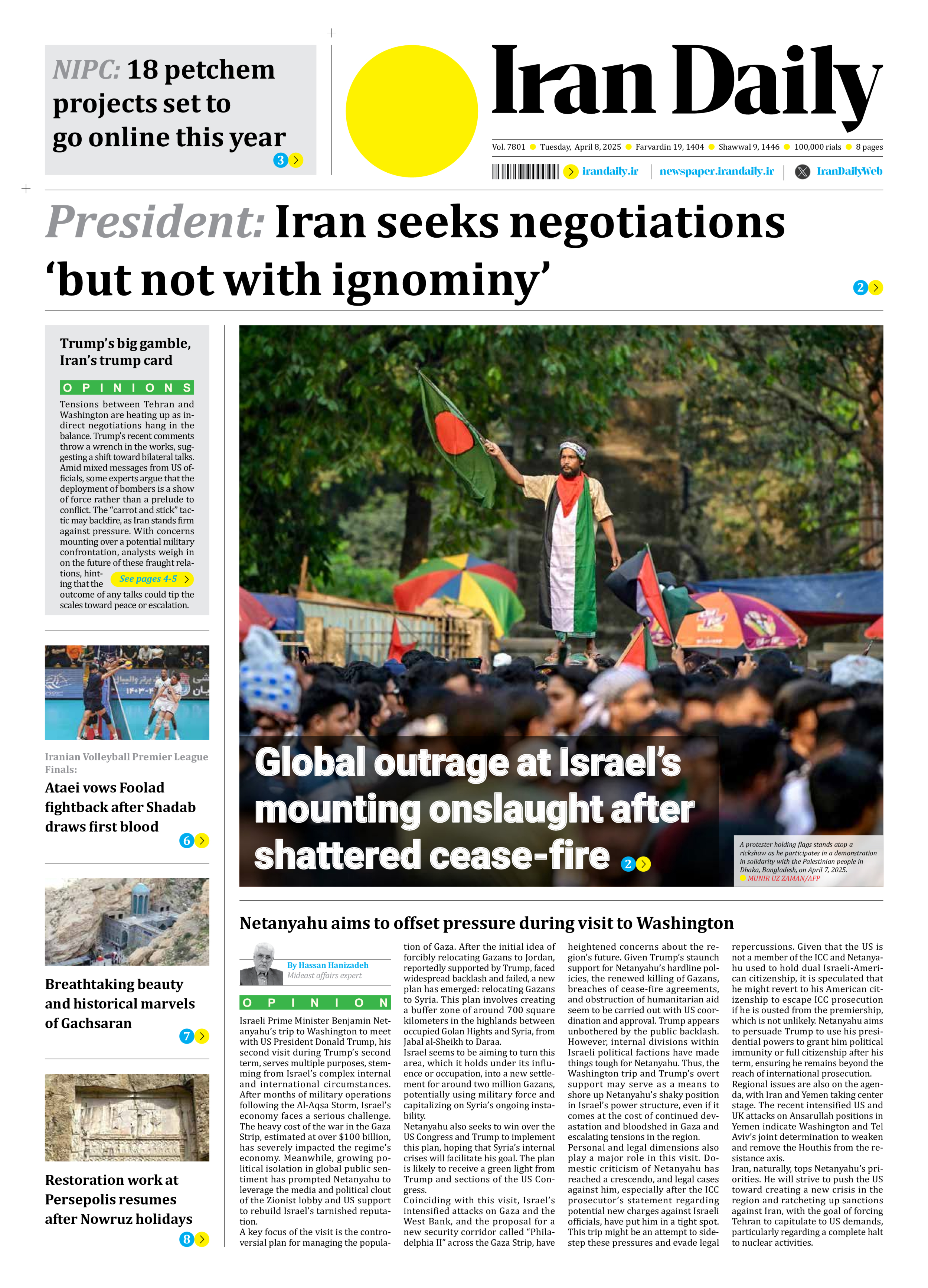
Netanyahu aims to offset pressure during visit to Washington
By Hassan Hanizadeh
Mideast affairs expert
Israeli Prime Minister Benjamin Netanyahu’s trip to Washington to meet with US President Donald Trump, his second visit during Trump’s second term, serves multiple purposes, stemming from Israel’s complex internal and international circumstances. After months of military operations following the Al-Aqsa Storm, Israel’s economy faces a serious challenge. The heavy cost of the war in the Gaza Strip, estimated at over $100 billion, has severely impacted the regime’s economy. Meanwhile, growing political isolation in global public sentiment has prompted Netanyahu to leverage the media and political clout of the Zionist lobby and US support to rebuild Israel’s tarnished reputation.
A key focus of the visit is the controversial plan for managing the population of Gaza. After the initial idea of forcibly relocating Gazans to Jordan, reportedly supported by Trump, faced widespread backlash and failed, a new plan has emerged: relocating Gazans to Syria. This plan involves creating a buffer zone of around 700 square kilometers in the highlands between occupied Golan Hights and Syria, from Jabal al-Sheikh to Daraa.
Israel seems to be aiming to turn this area, which it holds under its influence or occupation, into a new settlement for around two million Gazans, potentially using military force and capitalizing on Syria’s ongoing instability.
Netanyahu also seeks to win over the US Congress and Trump to implement this plan, hoping that Syria’s internal crises will facilitate his goal. The plan is likely to receive a green light from Trump and sections of the US Congress.
Coinciding with this visit, Israel’s intensified attacks on Gaza and the West Bank, and the proposal for a new security corridor called “Philadelphia II” across the Gaza Strip, have heightened concerns about the region’s future. Given Trump’s staunch support for Netanyahu’s hardline policies, the renewed killing of Gazans, breaches of cease-fire agreements, and obstruction of humanitarian aid seem to be carried out with US coordination and approval. Trump appears unbothered by the public backlash. However, internal divisions within Israeli political factions have made things tough for Netanyahu. Thus, the Washington trip and Trump’s overt support may serve as a means to shore up Netanyahu’s shaky position in Israel’s power structure, even if it comes at the cost of continued devastation and bloodshed in Gaza and escalating tensions in the region.
Personal and legal dimensions also play a major role in this visit. Domestic criticism of Netanyahu has reached a crescendo, and legal cases against him, especially after the ICC prosecutor’s statement regarding potential new charges against Israeli officials, have put him in a tight spot. This trip might be an attempt to sidestep these pressures and evade legal repercussions. Given that the US is not a member of the ICC and Netanyahu used to hold dual Israeli-American citizenship, it is speculated that he might revert to his American citizenship to escape ICC prosecution if he is ousted from the premiership, which is not unlikely. Netanyahu aims to persuade Trump to use his presidential powers to grant him political immunity or full citizenship after his term, ensuring he remains beyond the reach of international prosecution.
Regional issues are also on the agenda, with Iran and Yemen taking center stage. The recent intensified US and UK attacks on Ansarullah positions in Yemen indicate Washington and Tel Aviv’s joint determination to weaken and remove the Houthis from the resistance axis.
Iran, naturally, tops Netanyahu’s priorities. He will strive to push the US toward creating a new crisis in the region and ratcheting up sanctions against Iran, with the goal of forcing Tehran to capitulate to US demands, particularly regarding a complete halt to nuclear activities.







